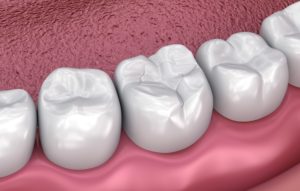June 23, 2021
When Will Your Filling Need to be Replaced?
 Tooth decay is the biggest threat to your smile, but it is preventable. Unfortunately, a cavity can still occur despite brushing and flossing. If you’ve ever had one, it was likely treated with a filling. Whether amalgam or composite, it can protect your tooth for many years, but how long do fillings last in North Andover? Here’s when you can expect to need a replacement.
Tooth decay is the biggest threat to your smile, but it is preventable. Unfortunately, a cavity can still occur despite brushing and flossing. If you’ve ever had one, it was likely treated with a filling. Whether amalgam or composite, it can protect your tooth for many years, but how long do fillings last in North Andover? Here’s when you can expect to need a replacement.
How Long Will My Filling Last?
On average, fillings last for about 10 years, but it’s not uncommon for them to thrive for decades. Several factors influence their lifespan, such as:
- Materials used
- Oral hygiene habits
- Eating habits
- Decay around the filling
- Trauma to the tooth
- Grinding or clenching your teeth
Types of Fillings
Your filling will undergo a lot of wear and tear over the years from biting and chewing. Its longevity depends on the type of material used to treat your tooth. There are 4 main types of fillings; however, the most common are:
- Amalgam Fillings
The most traditional method to treat decay is amalgam fillings. They are composed of various metals, including mercury. Despite their dark appearance, they have been used in dentistry for over 150 years because of their success. According to a 2016 study, the average amalgam filling will last for about 15 years. Although they are an affordable and convenient solution, they contain mercury and are quite noticeable, which is why many people choose to have them replaced with a tooth-colored option.
- Composite Fillings
Composite fillings are the most popular method to treat cavities because they blend in with the enamel. They are made of a mixture of acrylic and ceramic resins, which can be customized to match the color of your teeth. A 2014 study found they can last for about 10 years despite not containing any metal. Typically, smaller fillings will thrive for longer than those used to treat larger areas of decay.
What are the Signs My Filling is Failing?
Eventually, your filling may crack or wear down. In some cases, it may even fall off. If you notice your filling is damaged or you’re experiencing pain or sensitivity with the tooth, it’s time to contact your dentist. They’ll check the edges of the filling to ensure the tooth is still sealed. If it is compromised in any way, your dentist will replace it. Your filling will also be examined at each routine dental appointment to make sure it is still functioning as intended.
Fillings are a tried-and-proven method to rehabilitate a tooth that has been damaged by decay. You can save your tooth using an effective, long-term solution to maintain a healthy smile.
About Dr. E. Charles Beliveau
Dr. Beliveau earned his dental degree at the University of Maryland School of Dentistry before continuing his training at the Pankey Institute and Spear Education. For over 30 years, he has helped each patient achieve a healthy, beautiful smile. If you need a filling replaced, contact our office today to schedule an appointment.
No Comments
No comments yet.
RSS feed for comments on this post.
Sorry, the comment form is closed at this time.
